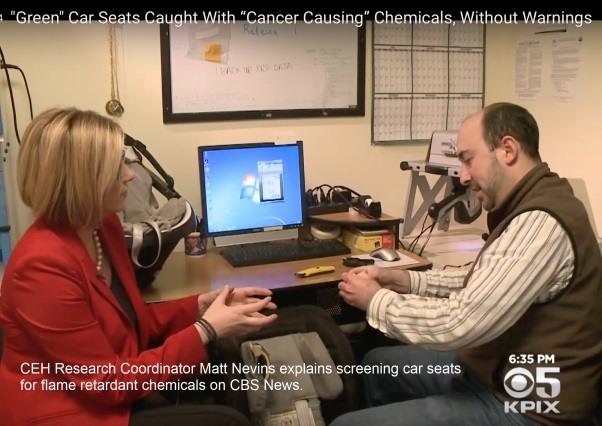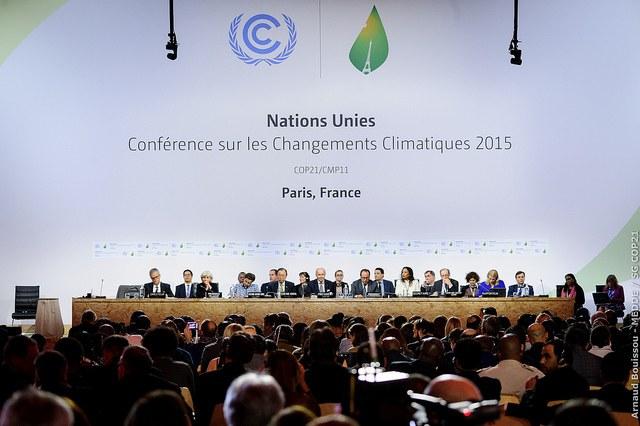Adidas Surpasses 2015 Better Cotton Target


Athletic apparel has sure improved since the bulky sweatsuits of our parents’ generation. While those heavy cotton jersey outfits are still easy to find, what we now wear to the gym or yoga is often thinner, thankfully moisture-wicking and, let’s face it, is sharper and far more presentable than those frumpy grey sweats of yesterday.
The better materials and sleek designs paid off: Sales have dramatically risen in recent years for most athletic gear companies, from Nike to Lululemon Athletica, as they have profited from the fact that Americans are spending more on such clothing since it now often doubles as fashion. The size of the U.S. athletic wear market, in fact, could be as high as $225 billion annually.
That demand, however, requires more cotton, a crop that requires massive amounts of water and land. WWF estimated that to produce one kilogram (2.2 pounds) of cotton, 20,000 liters (almost 5,300 gallons) of water is required from planting to harvest. About 2.5 percent of the world’s cropland is devoted to growing cotton, yet WWF says this crop requires 24 percent of global insecticide sales and 11 percent of pesticide sales annually. Almost 75 percent of the world’s cotton is grown in regions that require irrigation, including the world’s largest producers such as the U.S., China, Uzbekistan, Pakistan and countries in western Africa. Add the human rights misery that has festered from its production worldwide, and that one kilo of cotton needed to manufacture the T-shirt and jeans you are wearing has left quite the footprint before they landed in your closet.
For a decade, however, the Better Cotton Initiative (BCI) has been committed to mitigating the impacts that stem from global cotton production. This NGO strives to make cotton sustainable on all three fronts: economic, environmental and social. According to its most recent annual report, the cooperation BCI has engendered between farmers, ginners, manufacturers and retailers has resulted in a 2014 harvest of 2 million metric tons (2.2 million U.S. tons) of cotton that is more sustainable, responsible and, for farmers, equitable. One apparel company that has made a commitment to the procurement of sustainable cotton is Adidas.
Last week, the German athletic clothing and shoes manufacturer, the second largest on Earth after Nike, announced it had exceeded its 2015 target of sourcing “Better Cotton.” The company said 43 percent of all cotton it purchased last year was from BCI growers, exceeding its original goal of 40 percent.
Most of Adidas’ Better Cotton comes from India, Pakistan, China, Brazil, Turkey and Australia. Those fibers in turn are accounted for by BCI’s “mass-balance” traceability system, which allows them to be processed with conventional cotton — keeping costs down for textile suppliers, which often operate on thin margins. All of this sustainable cotton consumption is monitored by BCI’s “chain of custody,” a documentation management system that the NGO says ensures retailers can make claims about its cotton with integrity.
Companies such as Adidas support BCI’s work by paying annual volume-based fees to BCI. Those funds then allow BCI to continue its field implementation projects at cotton farms worldwide. Professionals at Adidas also work with manufacturers and elsewhere within the company's supply chain in order to explain how to source, track and report its incorporation of Better Cotton. This approach, which Adidas has taken since 2011, will allow the company to eventually reach its goal of 100 percent Better Cotton by 2018, an Adidas spokesperson told TriplePundit in an email.
Now if you’re looking for that truly 100 percent sustainable cotton shirt, keep in mind that, again, the cotton from all sources are processed together as it is transformed from bolts of textiles to an item of clothing. There is no way to declare which particular Adidas clothing item has what percentage of Better Cotton in it. “We can say with certainty, however, that a known mass of Better Cotton entered and exited the supply chain,” an Adidas representative told 3p in an email, “and that farmers and planet have benefited from its production.”
Going beyond cotton, Adidas is also working on other projects to ensure that all of its materials will become more environmentally responsible. Shoes, for example, have an average of approximately 65 various parts and incorporate as many as 360 manufacturing processes — which are among the reasons why those sneakers may have crossed several international borders before they landed on a store’s shelf.
To that end, Adidas has helped launch the WRAP Consortium Project, or Sport Infinity, a European Commission initiative that seeks to enable the manufacture of easily customizable athletic gear. Ideally, this process, which is essentially 3-D printing, would allow a worn-out soccer shoe to be broken down and recycled into another product without the challenge of disposing other materials such as adhesives.
In addition, Adidas has also adopted a sewing technique it calls Futurecraft Tailored Fiber, which the company says allows new raw materials such as salvaged gillnets to be integrated in new footwear designs and reduce the amount of waste that results from traditional shoe manufacturing. Furthermore, on the ocean garbage front, adidas also partners with Parley for the Oceans, an initiative that incorporates more plastic waste from the seas into shoe components such as midsoles.
We are still far from the time when we can purchase athletic wear with a totally clear conscious. Nevertheless, the efforts made by companies such as Adidas have made huge progress in recent years, and will spur even more innovation within the textile industry in the coming decade.
Image credit: Adidas
Safer Products For All Children


By Michael Green
When parents pay a premium price for high-end products for their children, they expect those products to be safe -- especially when the products are advertised as safer than other similar, cheaper versions.
But parents who purchased some Orbit Baby car seats recently found out that they weren’t getting what they paid for. Orbit sells high-end car seats, including car seat/stroller “travel systems” that can cost more than $1,500. Some parents who are concerned about toxic chemicals were persuaded to shell out the money for an Orbit car seat by the company’s promise that its products are made without flame-retardant chemicals.
After all, as many parents know, flame-retardant chemicals can cause cancer and have been linked to numerous other serious health problems, including lower IQ, advanced puberty and reduced fertility, among others.
Referring to brominated flame retardants (BFRs), Orbit’s advertising claimed that its car seats are “BFR-Free” and “… made without the use of toxic brominated and chlorinated chemicals.” But tests on certain Orbit car seats by the Center for Environmental Health and others show that the foam filling in the seats contained high levels of chlorinated Tris, a flame-retardant chemical that is known to cause cancer. Under California’s strong consumer protection law, consumers must be warned before they purchase products that can expose them to cancer-causing chemicals, including Tris.
Orbit not only failed to warn consumers, but the company also actively mislead parents with false advertising that claimed its products were safer because they did not contain any toxic flame retardants like Tris. Our organization is now taking legal action calling on Orbit to recall the contaminated car seats. Concerned parents who bought an Orbit car seat can contact CEH to learn more.
Orbit’s deceptive advertising is among the worst greenwashing we have seen in 20 years of exposing unsubstantiated eco-claims. It’s especially disturbing to note that, according to CBS News, one retailer alerted Orbit to the problem with its car seats as early as the fall of 2014, but the company continued to advertise the products as flame retardant-free.
The Orbit story is coming out at a time when dozens of other baby products and furniture companies are making legally-binding commitments to eliminate flame retardants from their products. In addition, major companies, institutions and universities that collectively buy $600 million worth of furniture annually, including Harvard, Facebook, Blue Cross Blue Shield of Massachusetts and others, are urging their furniture suppliers to provide them with products free from flame-retardant chemicals.
No parent should have to pay more to provide their child with safer products free from harmful chemicals. With a growing global market for safer products, companies that can offer affordable, truly sustainable goods will be rewarded. For both consumers and corporations, the Orbit story shows that eternal vigilance is the price of freedom from harmful chemicals.
Image courtesy of the Center for Environmental Health
Michael Green is Executive Director of the Center for Environmental Health.
The 2016 International Home and Housewares Show -- A Sustainable Assessment


In the course of doing business for my company, Green Product Placement, we attend a number of trade shows and expos to connect with our clients and research potential new ones. Because of this, and our unique slant as an agency that only represents vetted “better brands," we’re always on the look-out for innovative brands doing good things in the sustainability and/or socially enterprising space.
March, this year, is a big month for expos, and the first one we attended this month was the International Home and Housewares Show, hashtag #IHHS2016, at the largest convention center in North America, McCormick Place, in Chicago.
Some of the trends we saw were a proportionally large number of brands selling food containers and bento boxes, along with water bottles and other hydration vessels. The bento box trend appeals to the “return to the kitchen and cook healthy at home” movement, allowing users to transport their meals in reusable containers. Almost all that we saw were advertised as specifically BPA free, and a few took the specifically “eco–friendly” marketing angle, such as Eco Lunch Boxes , which includes their line Blue Water Bento.
Hydration vessels, which include water bottles, tea and coffee containers, citrus water containers, and iced tea makers, were also very well represented at the show. Contigo showed a protein drink mixer to go cup, "Shake and Go,” that includes a ball inside to help mix protein powder drinks.
Takeya markets a drink system that includes healthy iced teas, brewing pitchers, and bottles with which to carry them, thus cutting down purchase of bottled drinks in disposable bottles.
Full Circle Home has a full range of sustainably-produced home cleaning goods and vessels, including bottles that include a citrus juicer to make your own lemon, lime or orange water. The Core Home line started with a line of sustainable bamboo home accessories, and has grown to include other home and kitchen goods, and some unique looking vessels, including glass ones with sustainably grown organic bamboo tops. Bodum has some interesting glass and cork drip coffee makers that had a great looking, sustainable design.
For water bottles with built in filters, Black and Blum features a design-forward bottle with an actual piece of charcoal that sits inside to filter the water, and the leading brand in tap water filtration pitchers, Brita, features several models of bottles with a built in, bottle-sized Brita filter.
As an alternative to the hard box carry system, two brands have emerged with a more eco-friendly equivalent to the disposable zip bag. Blue Avocado, made of PEVA which can be found at major retailers, and Stasher, which launched for large-scale sale recently. Stasher bags are made of food-grade, platinum silicone.
Another home item with a large presence at the Expo were air purifiers. A big standout in both innovative design and aesthetics was Light Air. Light Air uses negative ion technology to filter the air using a built-in filter that's washable and reusable. There are no filters to replace and throw away. They also have a built-in light and can be used as a night light.
There were some interesting products in the serving-ware category that were made of wood, plastic, bamboo and plastic composites -- using recycled plastic, scrap wood shavings and renewable bamboo. One of them, Evo Goods, uses the former and Eco Smart uses the latter. Evo Goods has also developed a line of plates and dishes that look and feel exactly like plastic but are made of corn products and decompose in a matter of weeks. Eco Smart also uses some glass, flax and other earth friendly materials in the production of their line.
Speaking of glass, no visit to The Home and Housewares Expo would be complete without a mention of the most sustainable consumer glass producer in the world, Luminarc. The company developed some very stylish tableware, made of glass, that can take on the look of vivid colors, metal, and ceramic finish, all made of earth-friendly, recyclable glass.
In the home cleaning categories, some standouts were NatureZway, who make bamboo based cleaning solutions such as a reusable replacement for paper towels and floor wipes. Fresh Wave makes a plant based proprietary formula odor remover that removes odors from the air, and doesn’t mask them with just another scent.
In small electrics, Rowenta, owned by the uber sustainable Groupe SEB, has the Eco-Iron, the only energy saving iron in North America.
Lastly, in the eco-friendly pot and pan category, we must mention Green Pan and their affiliate companies, Green Life, Green Chef, and Vita Verde. Green Pan is the first and foremost manufacturer of safe ceramic coated non-stick cookware. They have their own factories, practice fair wage and sustainable production and have grown by leaps and bounds since they launched in the US in the mid-naughties.
All in all, for our first IHHS, we saw some interesting products and brands doing some interesting innovations in the sustainability space. That being said, we did still see booth after booth of scented products filled with chemicals, unsafe cleaners and cheaply-made plastic home products that didn’t look made to last, in addition to the ubiquitous coffee pod products.
To be fair, we also saw plenty of cafetiere/French Press and drip products, refillable pods, and of course all of those water bottles and bento boxes. What needs to happen next is to start seeing more people actually using them.
We were excited to see a compost/recycling/trash sorting station, made of recycled milk jugs, no less, at the food court at McCormick Place. All of this is a start, but we would like sustainability to take a much larger role at this and related expos, both in product design and innovation and also execution.
Judging by the session we sat in on, How Social Media is Changing Design, chaired by University Faculty/Researcher April Starr, design consultants Pensa, industrial designer and experience designers from Kitchen Aid and McDonald’s, sustainability and sustainable concerns are in the top 10 consumer feedback comments on social media. That, in turn, affects design and even how business is done. People are talking, and business and manufacturing must listen.
3p Weekend: 10 Brands Doing Sustainable Cotton Right


More than 25 million tons of cotton are produced every year in around 85 countries, employing an estimated 250 million people. While cotton cultivation is crucial to many developing economies, it can also have a hefty impact on the environment.
About 10 percent of all agricultural chemicals used worldwide are processed by the cotton sector. While organic methods are slowly growing, organic cotton only makes up around 1 percent of the global cotton supply chain.
Of course, organic isn't the only name in the game. Spearheaded by the Better Cotton Initiative, Better Cotton is an easier standard for farmers to follow that still reduces impact on the environment. With Better Cotton, pesticides and insecticides are used, but the principle is “continued improvement.” In 2014, 7.6 percent of all cotton produced globally was Better Cotton, according to the Better Cotton Initiative’s 2014 sustainability report.
But some leading brands aren't waiting for access to organic and Better cotton to improve. They're switching their supply chains over to more sustainable sources now, while buoying efforts to increase access to sustainable raw materials. From organic fast-fashion to fair trade, these 10 brands are showing it's possible to do sustainable cotton right.
1. C&A
C&A, a chain of European department stores headquartered in Vilvoorde, Belgium, has been making strides in sustainable cotton sourcing for over a decade.
The company is one of the world's largest retailers of organic cotton apparel through its Bio Cotton range, launched in 2004. Bio Cotton now represents 40 percent of the company's cotton sales, and it sold a staggering 130 million certified organic products in 2014 -- adding up to 46,000 tons of organic cotton. Sustainable cotton now makes up nearly half (46 percent) of the company's cotton sales and 27 percent of its total product line.
C&A works with organizations like CottonConnect to establish more sustainable sources of non-organic cotton through initiatives such as Responsible Environment Enhanced Livelihoods (REEL) in India, China and Pakistan. In 2008, it decided to stop sourcing cotton from Uzbekistan, following the uncovering of forced labor on cotton farms in the country.
2. Adidas
Adidas sourced 43 percent of its cotton as Better Cotton last year, exceeding its goal of 40 percent, the company announced last month. The athletic-wear manufacturer is a pioneer member of the Better Cotton Initiative, and Frank Henke, VP of social and environmental affairs, said it's "exciting to see how Better Cotton is becoming a sustainable mainstream commodity."
The Adidas Group aims to source 100 percent of the cotton it uses -- across all product categories and in all its brands -- as ‘sustainable cotton’ by 2018.
3. Patagonia
It likely won't shock you that sustainability darling Patagonia is doing big things in low-impact cotton, but even we were a bit surprised by how far its commitments go back: The outdoor company began the exclusive use of organically-grown cotton in all of its products in 1996.
"As it turned out, the move didn’t compromise quality," the company says on its website. "It provoked a fundamental change in our attitudes about agriculture. As part of our organic cotton program, hundreds of us took tours of cotton fields, and we saw for ourselves the dangers of pesticide use and the benefits of organic farming. Many of us have since shifted to buying organic foods and clothing."
4. H&M
H&M is one of the world's leading buyers of organic cotton. It is also an active member of the Better Cotton Initiative and an increasing user of recycled cotton, further adding to its kinder cotton portfolio. The fast-fashion giant's ultimate aim is to source 100 percent of its cotton from 'sustainable sources' -- either organic, Better Cotton or recycled -- by 2020.
TriplePundit's editor-in-chief, Jen Boynton, visited H&M's headquarters in Stockholm this year, and she was impressed by the company's efforts toward supply-chain transparency, as well as its expanding Conscious Cotton line.
5. Levi Strauss
Levi Strauss made waves in 2007 when it conducted the apparel industry’s first lifecycle assessment (LCA) study to assess the full environmental impact of a core set of products from cradle to grave. The study found that the greatest water and energy impact happened in two areas: cotton cultivation and consumer use. Nearly 3,800 liters of water is used throughout the lifetime of a pair of jeans, 68 percent of which is used for cotton cultivation.
To reduce the impact of cotton consumption, the company is working with the Better Cotton Initiative to train farmers to grow cotton using less water. Based on BCI harvest data, cotton farmers in China reduced their water use by 23 percent in 2013 compared with farmers who were not using BCI techniques. LS&Co. plans to continue working with its global suppliers with the goal of sourcing approximately 75 percent Better Cotton by 2020, up from 6 percent today.
6. VF Corp.
VF Corp. is likely one of the biggest apparel firms you've never heard of. It's the parent company behind popular brands like the North Face, Nautica and Timberland, and it has a fittingly enormous supply chain. The apparel behemoth annually purchases about 1 percent of the world’s cotton, which requires land roughly 32 times the size of Manhattan Island, to fill its orders.
Its story is also proof that slow, steady steps toward greater sustainability can make a big impact -- especially when you're talking about such high purchasing volumes. VF Corp. sourced 2,000 tons of sustainable cotton last year, which only amounts to 1 percent of its total cotton use but is still a pretty impressive start. Next year it's shooting for 6,000 tons.
The company is also a Better Cotton Initiative partner and is now funding a farm-level BCI project in Hebei, China. It has also pledged not to source Uzbek cotton, which has been linked to forced and child labor.
7. Indigenous
Across its business operations, fair trade fashion brand Indigenous expertly balances environmental responsibility and worker empowerment.
To create its men's and women's lines, the company works with over a dozen fair trade field-organizing teams and quality-control centers that coordinate more than 300 artisan work groups. All artisans are paid a living wage, and you can learn more about their stories on the company's website.
In addition to being fair to workers, all of Indigenous's products are made with sustainable materials. The company uses only certified organic cotton, as well as other natural and organic fibers.
8. PrAna
Another fair trade label, PrAna claims it can trace every product in its portfolio from the farm level through manufacturing. "While that seems like a lot of work, we think it is pretty important to make sure that what we sell our customers is in fact what we claim it to be," the company says on its website.
All of PrAna's garment workers are paid a living wage, and it was one of the first major apparel companies to offer Fair Trade Certified products. On the raw materials side, the company uses exclusively organic cotton, as well as other sustainable fibers like hemp, recycled wool and polyester, and repurposed down.
9. Synergy
Inspired by a trip to Nepal and India, Synergy offers a range of stylish womenswear that's kind to both people and the environment. Its entire line is handmade in Nepal according to fair trade practices, and the company is also committed to sustainable materials sourcing.
Synergy uses only organic cotton, mostly from India, which makes up the majority of its product line. It also focuses on low-impact, low-toxicity dyes and making its clothing biodegradable at end-of-life.
10. IDH
Sustainable trade initiative IDH is out to improve access to Better Cotton worldwide. In 2009, a group of private and public players, including IDH, developed a strategy to speed up the implementation of the Better Cotton System. This demand-driven strategy is based on the commitment of frontrunner brands and retailers to invest both in farmer-support programs and in the procurement of mainstream volumes of Better Cotton.
The initiative is now active in top cotton-producing countries such as India, Pakistan, China, Brazil and Mozambique. IDH partners with nonprofits and supply-chain partners to work with producers on the farm level, and its tally of top brand partners includes Ikea, Marks & Spencer and several names from this list.
Image credit: C&A
U.S. and Canada Promise More Cooperation on Climate Change


Despite the historically close relationship between the U.S. and Canada -- and the fact that the countries swap $2 billion in business daily across the almost 4,000-mile (6,400-kilometer) border that stretches along the 49th parallel to Maine -- a Canadian prime minister hasn't come to the U.S. for an official visit since 1997. But yesterday, Prime Minister Justin Trudeau and President Barack Obama met in Washington, D.C. to discuss a bevy of issues, including their announcement that both countries will increase cooperation on tackling risks associated with climate change.
In a joint statement made between the two countries, both leaders pledged to work closely together on climate change, clean energy and stewardship of the Arctic region. They also reiterated their support for the Paris climate agreement and said they would implement their respective countries’ Intended Nationally Determined Contributions (INDCs), the reduction in greenhouse gas emissions promised by countries that participated in the December climate talks in Paris.
Considering that Canada and the U.S. rank in the top 10 of the world’s highest consumption of energy per capita, all eyes are on these countries in gauging whether the commitments made in Paris will have teeth.
Of the many promises made by the two leaders at the White House on Thursday, one of the most significant is the drive to slash long-term methane gas reductions on both sides of the border. President Obama and the prime minister agreed to reduce methane emissions from the oil and gas sector at least 40 percent from 2012 levels by 2025.
In a move that will surely infuriate the energy industry even further, the president has directed the Environmental Protection Agency (EPA) to write new regulations for methane emissions that are released from existing oil and gas sources. The EPA’s counterpart up north, Environment and Climate Change Canada, says it will do the same for existing and new oil and gas sources and will issue the first phase of proposed regulations by early next year. New regulations in Alberta will have a huge impact on its oil sands, which contribute largely to Canada’s greenhouse gas emissions — though more restrictions will be vehemently opposed by the country’s energy industry.
One of the U.S. Senate’s foremost leaders on environmental stewardship and climate change has hailed the agreement. In an emailed statement to TriplePundit, Sen. Barbara Boxer of California said: "I am very pleased with today’s announcement that the U.S. and Canada are working together to fight dangerous climate change. The joint commitment to reduce methane emissions -- which is a potent source of climate pollution -- will help protect children and future generations from the worst impacts of climate change."
One constituency that will experience more risk from climate change and energy exploration is the countries’ indigenous communities. Just last week, PM Trudeau met with First Nations, Inuit and Métis Nations leaders in British Columbia to discuss how the Canadian federal government can work with them to promote “clean growth” and find ways to fight climate change. To that end, both the prime minister and President Obama announced that they would develop a plan that would deploy “innovative” renewable power and energy-efficiency alternatives that would reduce many of these communities’ dependence on expensive, and polluting, diesel fuel.
In addition to the ongoing environmental challenges in the Arctic, discussions including land-claims agreements as well as solutions to address social challenges will continue at the White House’s hosting of an Arctic Science Ministerial this fall.
In a continued swipe at Republicans (and Canada’s conservative party, which suffered huge losses last October as PM Trudeau and the liberals were swept into power), the countries’ joint statement also said they would work on future Arctic energy deployment by taking a “science-based approach” to oil and gas. Both leaders also called for an international agreement to ensure that unregulated fisheries in the central Arctic Ocean will not be opened. And in a nod to the realities that climate change imposes on this region, Canada and the U.S. said they will collaborate to establish shipping route policies in the Arctic that will minimize any impacts on important cultural and ecological areas.
While Canada has a majority government, political polarization in Washington, D.C., puts the U.S. commitment to cross-border climate change cooperation in doubt. Some Republicans are already furious about the Obama administration’s pledge to be the largest contributor to a climate finance fund for developing countries, and any executive order will likely produce unified howls from a party currently shattered by the nomination race dominated by Donald Trump and Ted Cruz. But for two countries that have long shared cultural and economic ties, Thursday’s White House summit takes their relationship further into the 21st century.
Image credit: Instagram (The White House)
U.S. Pays First $500 Million to Green Climate Fund


Despite Republican opposition, this week the Obama administration paid the first installment of its $3 billion promise to help developing nations tackle climate change risks. The $500 million disbursement to the United Nations’ Green Climate Fund (GCF) comes over a year after the White House first made this commitment, and three months after President Obama reiterated this promise at the COP21 climate talks in Paris.
This latest U.S. contribution means the fund has reached almost 70 percent of its total goal to raise the $10.3 billion that wealthy nations promised in the months leading up to COP21.
This initial round of funding will finance climate change mitigation and adaptation projects through 2018. It is up to the GCF to decide how it will fund initiatives that will avert the most catastrophic risks related to climate change, ensure sustainable long-term economic growth, and maintain stability and security in the countries facing the most climate-related threats in the coming decade.
At least 50 percent of the funds are to be targeted toward the most vulnerable nations, including least developed countries, the small developing island states and African nations.
After the U.S., the largest contributors to this fund are Japan, the United Kingdom, France and Germany.
Republicans on Capitol Hill, led by Sen. John Barrasso of Wyoming, have attacked this disbursement. At a Senate hearing on Tuesday, Sen. Barrasso questioned Heather Higginbottom, deputy secretary of state for management and resources, about the nature of this $500 million contribution. At question is what the Republicans say is the questionable legal authority to distribute money to the GCF as it is technically a new program.
Bringing up the ongoing Flint water crisis, the senator told Ms. Higginbottom: “I just think it’s hard to explain to taxpayers in struggling communities across our country . . . that the president and this administration is willing to give $500 million as a handout to foreign bureaucrats instead of addressing real problems here at home.” Sen. Barrasso also described the GCF as an “international slush fund” that is unauthorized by Congress.
In response, Ms. Higginbottom said that the funds, which were sent to the World Bank on Monday, were reviewed and found to be in full compliance with U.S. law.
Watch for the Republicans to continue hammering the Obama administration on this issue, as the federal government’s fiscal 2017 budget calls for an additional $750 million to be paid to the GCF. Indeed, while climate change to become an especially politicized and partisan battle here in the U.S., it is worth nothing that the George W. Bush administration pledged $2 billion to the Climate Investment Funds in 2008. The U.S. government will spend $37.9 billion on foreign aid this fiscal year.
For President Obama, who hit a roadblock with the Supreme Court’s recent decision to stay new rules covering reductions in emissions from power plants, his administration’s commitment to the GCF bolsters his legacy as having the most aggressive (or destructive, depending on one’s point of view) agenda related to the environment and climate change. Meanwhile, this follow-through on climate change assistance will infuriate the four remaining Republicans who are campaigning for their party’s presidential nomination. All of them have said they will undo Obama’s climate plan if they succeed him on Jan. 20.
Image credit: COP Paris (Flickr)
United Kicks Off Regular Biofuel Flights on West Coast


On Friday, March 11, United Airlines will debut its first commercial flight using a new biofuel blend called Honeywell Green Jet Fuel. The flight will travel between Los Angeles and San Francisco.
The fuel is being produced by AltAir at an idled petroleum refinery in Paramount, California, just outside of LA, using process technology developed by Honeywell UOP. AltAIr is “a refiner of environmentally sustainable feedstocks for the production of jet and diesel fuels,” headquartered in Seattle. The Paramount facility is the “world’s first renewable fuels refinery with integrated jet fuel production capability.”
The relationship between United and AltAir goes back to 2013, when we first reported on their partnership announcement. At that time United committed to purchase 15 million gallons, which gave AltAir the means to convert the LA production facility, which is now producing 30 million gallons of renewable fuel for both military and commercial purposes per year.
Biofuels are an important component of the overall decarbonization of our transportation energy system, particularly in the aviation sector, where significant levels of electrification are still decades away. Not only is the existing infrastructure entirely based on liquid fuel, but the amount of energy per unit of weight, an extremely critical factor in aviation, is still far better with biofuel than it is in any electric propulsion technology available today.
The same plant that produces the jet fuel also produces Honeywell Green Diesel, a drop-in replacement for diesel made from petroleum, using the same process technology.
“Production by AltAir and Diamond Green Diesel demonstrates that the vision of producing real fuels from sustainable feedstocks has taken the crucial step from technology demonstration to commercial-scale production,” said Veronica May, vice president and general manager of Honeywell UOP’s Renewable Energy and Chemicals business. “Honeywell UOP is committed to continuing to advance its technology to give fuel producers options to use sustainable feedstocks.”
Both the renewable jet fuel and the green diesel are made from a range of sustainable feedstocks such as used cooking oil, inedible corn oil, tallow, camelina, jatropha and algae. The process is compatible with existing hydroprocessing equipment commonly used in today’s refineries, making it ideal for plants that can be converted to produce renewable fuels.
According to a Honeywell UOP press release, Honeywell Green Diesel offers up to an 80 percent reduction in greenhouse gas emissions versus chemically identical diesel from petroleum. Unlike biodiesel, Honeywell Green Diesel is a drop-in replacement for traditional diesel requiring no modifications to equipment or infrastructure.
Honeywell Green Jet Fuel can replace as much as 50 percent of the petroleum jet fuel used in flight, without any changes to the aircraft technology, while meeting the current ASTM jet fuel specifications. The result, depending on the feedstock, can be as much as a 65 to 85 percent reduction in greenhouse gas emissions compared with petroleum-based jet fuel.
Back in January, the U.S. Navy’s Great Green Fleet, a carrier strike fleet of ships and aircraft, began using renewable fuel on regular deployments as part of the Navy’s efforts to demonstrate and deploy alternative sources of fuel, reduce energy consumption, decrease reliance on imported oil and significantly increase use of alternative energy. AltAir prepared 1.34 million gallons of F-76 type Naval Distillate Fuel for the launch. The renewable fuel will be blended with conventional petroleum fuel.
Image courtesy of United Airlines
Eco-Friendly Hijabis: Taking a Sustainable Stance in Muslim Fashion


By Sarah Ghanem
Not long ago, Muslim fashionistas had to master the art of layering to ensure their fashion ensembles followed the religion’s prescription. These days, it is so much easier to procure Muslim-friendly garments that are stylish and fashionable. The growing purchasing power of Muslim consumers have convinced many mainstream fashion powerhouses like Dolce & Gabbana, Donna Karen and Chanel to jump onto the Muslim-fashion bandwagon.
This effort in changing the fashion industry to be more inclusive of other styles of dress has been lauded by many fashion-conscious Muslims around the globe. While this is a positive move, some Muslims are still searching and wanting more from their garments in order for them to fully perform their responsibilities as devout Muslims. The passages of the Quran and Sunnah not only shape their belief in dressing modestly, but also to do so in a manner that protects every living creature on Earth.
What is sustainable fashion?
For many Muslim women, the flowy abaya coupled with a headscarf that drapes over the neck and chest is the easiest combination that complies with the Islamic dress code. However, these garments are often the barrier in fulfilling her responsibilities in conserving the environment. Oftentimes, abayas and headscarves are made of polyester, rayon and nylon – synthetic fabrics that have damaging effects on the environment. They are created by a number of complex chemical processes and treatments that deteriorate the ecosystem through the emission of pollution and intensive energy consumption.
Sustainable fashion often refers to garments made of eco-friendly resources, e.g. sustainably-grown fibers from crops such as organic cotton, hemp and bamboo or recycled materials. One of the biggest misconceptions that designers and consumers have about sustainable fabrics is that they are grainy and rough, making them less versatile than synthetic fabrics.
These days, this is no longer true – technological breakthroughs have allowed these fabrics to evolve to be more refined and flexible. However, it is important to note that it is also about reducing the amount of clothing in landfills and diminishing the negative impact of agro-chemical products used in the production of conventional fibre crops, e.g. cotton.
Greener lifestyle is an equitable responsibility
Leading a green and ethical lifestyle is of the upmost importance for eco-friendly Muslims. They believe that they are stewards who bear the responsibilities of protecting god’s creations against the negative effects of climate change and restoring the balance in the environment. Among the many aspects in this niche crusade, young Muslim women in eco-friendly hijabs are spreading awareness and knowledge on sustainable fashion through websites, blogs and social media. This notion of a greener Islamic way of life has been adopted by many young Muslims in the United States, Canada and Europe.
While there is still little awareness about the importance of sustainable Muslimah fashion in Asia, some entrepreneurs are starting to cater to this niche in order to spread awareness of this accountable responsibility toward Mother Nature.
Companies like Kloth Malaysia are working with Waste2Wear to push the idea of using greener textiles in everything. While Kloth Malaysia's business started off with colorful, eco-friendly hijabs, the foursome are now expanding to other eco-friendly merchandises – an endeavor that not only delights eco-friendly hijabis around the globe, but other environment evangelists as well.
Sustainable fashion and hijabis going mainstream
Efforts in disseminating the importance of sustainable fashion is not a lone battle for these eco-friendly hijabis. Since 2011, H&M has been in the forefront of ethical and sustainable fashion. While some critics are still skeptical of its business model, the fast-fashion giant is striving to revolutionize the mainstream fashion industry, in search of ways to improve carbon footprints left by industry players. Last year, H&M made headlines when it decided to recruit model Mariah Idrissi as one of the faces for its eco-responsible line “ReCreated Denim."
Clad in a blush overcoat and loose pants, Idrissi complemented her outfit in a printed hijab for the Close The Loop campaign. The campaign was a bold move by the retailer in a time when the hijab is seen as a negative symbol. While the move was praised by many eco-friendly hijabis, some members of the Muslim community were upset by the promotional posters and video as they view it as immodest and inappropriate for a Muslim woman. Instead of being discouraged by this, the beautiful British model continues to spread the word on sustainable fashion and tries to do more to change the Muslim community’s perception on fashion.
There is still more to be done to bring the idea of sustainable fashion mainstream. While H&M's Close The Loop video was praised for its diversity and the deconstruction of fashion rules, many failed to see that it is about recycling. In this cause for a better Earth, people need to realize that it is a collective effort regardless if you are an eco-friendly hijabi or a 40-year-old woman in a miniskirt.
Image credit: Modanisa
Sarah is a hijabista and fashion consultant at Modanisa. She is really keen on modern, but modest Islamic wear for women, and she’s always trying out new fashion trends and styles.
Policy Points: How Business Can Influence Paid Leave, Taxes and Climate Issues


By Zach Bernstein
Voluntary corporate sustainability initiatives and social enterprises are essential but are not game-changers by themselves. In addition, we need laws and regulations that guide our economy toward sound, long-term decision-making, with full recognition of social and environmental externalities. As business leaders, we must support policy changes to help make the economy more sustainable.
A sustainable economy will depend on policies that will advance change on a societal level. Here are three important policies that can do that:
1. Make paid leave the law of the land
When North Dakota Sen. Heidi Heitkamp recently announced her support for the FAMILY Act, she said in a statement, “This bill is about investing in our workers and families today and tomorrow – at just the cost of a cup of joe.” The bill would provide 12 weeks of paid leave, with workers earning benefits equal to 66 percent of their monthly wages, to be funded by employer and employee contributions of 0.20 percent of wages. In other words, 2 cents of every $10 earned. In addition, Sen. Heitkamp said, “It would also prevent small businesses from squandering their budgets on rehiring and retraining new employees because they can’t afford paid leave for their workers.”
What’s at stake: The United States is the only developed nation not to guarantee paid maternity leave. Businesses with weak workplace policies run the risk of losing employees. Research indicates that, for jobs paying less than $50,000 per year, the direct cost to replace a worker is 20 percent of his or her annual salary. And when indirect costs are factored in, total costs could be more than one and one half times.
What you can do: As the FAMILY Act continues to gain momentum in Congress, the business community’s role becomes even more crucial. Businesses like EILEEN FISHER and UncommonGoods have spoken out in favor of paid leave legislation like the FAMILY Act. Add your business voice.
Leveling the playing field for business taxes
Toward the end of last year, Congress passed legislation with dozens of tax breaks that included both good and bad. As John O’Neill, tax policy analyst for the American Sustainable Business Council (ASBC) has explained, extensions on tax credits for renewable energy and energy efficiency are helpful, but rules that let U.S. multinationals avoid taxes with overseas tax havens are not.
What’s at stake: The tax break legislation made permanent or extended tax rules that allow companies to shift income offshore to avoid paying taxes. This means that those companies can continue to take advantage of U.S. public services like security, the legal system, and infrastructure, without paying their share of taxes – and forcing consumers and smaller businesses to pick up the slack.
What you can do: Congress needs to level the playing field for business tax policies. Most businesses – think of your neighborhood coffee shop – don’t have the resources or desire to move their operations or income overseas. It isn’t fair to ask them or their customers to bear a heavier tax burden while larger firms do not. Congress could still move on to inclusive tax reform; if that happens, your business can show support for closing offshore tax loopholes.
Support the Clean Power Plan
The EPA’s Clean Power Plan is under attack in federal court. In a recent ruling, the U.S. Supreme Court granted a stay, which prevents implementation of the plan until the D.C. Circuit Court rules in early June. The lawsuit at the center of this was brought by officials in 25 states and joined by powerful lobby groups such as the U.S. Chamber of Commerce. On the other side are 18 states as well as responsible business groups like the American Sustainable Business Council and the South Carolina Small Business Chamber of Commerce, which recently requested permission to file a “friend of the court brief” in support of the EPA.
What’s at stake: The Clean Power Plan represents the most significant effort by the federal government to cut greenhouse gas pollution and address climate change, goals supported by most small business owners. They know that left unchecked, climate change will lead to higher energy costs, supply chain disruptions, and severe weather. States should be focusing on efforts to comply with the Clean Power Plan rather than wasting time on a misguided effort to eliminate it.
What you can do: In addition to court challenges, the risk remains that Congress will attempt to block the rule through future legislation or budget maneuvers. Such moves would be bad for business and most industries. Most businesses want efforts to cut greenhouse gas pollution, avoid the effects of climate change, and move to energy sources that will make us more prosperous in the future. The Clean Power Plan can help achieve those goals - show your business’ support for this rule.
Image credit: Flickr/Diego Cambiaso
Zach Bernstein is Manager of Research and Social Media for the American Sustainable Business Council.
Whole Foods Promises to Sell 'Ugly' Fruits and Vegetables


Depending on the source, anywhere from 20 to 40 percent of produce in America ends up wasted. One reason why so many fruit and vegetables are thrown out is because they do not conform to what retailers and consumers believe fresh food should look like. Tomatoes too wide for a hamburger bun, carrots that look like something out of an anatomy textbook, and cucumbers that dare to be curved almost never make the shelves at grocery chains from Walmart to Whole Foods.
But Whole Foods, the supermarket that has arguably made organic and socially-conscious foods mainstream, announced that it will start selling “ugly” fruits and vegetables. As mentioned in a bevy of news sources from USA Today to Fortune, the Austin-based retailer will start selling these misshaped beauties at a discount. Imperfect Produce, a Bay Area startup that delivers oddly-shaped fruits and veggies at a discount in the Oakland and Berkeley areas, will partner with Whole Foods on this new marketing tactic.
Taking credit for this shift is Jordan Figueiredo, an advocate for waste diversion and founder of UglyFruitandVeg.org. After he launched a petition on Change.org last fall and paired it with a social media campaign, Figueiredo claimed a meeting with Whole Foods executives led to this change.
For Imperfect Produce, this agreement with Whole Foods is a sweet victory in its quest to halt the growing problem of food waste. Last year the company launched a partnership with the Northern California grocer Raley’s, but lukewarm consumer interest caused that campaign to sputter and eventually end.
Imperfect Produce’s quest this round should be a (pardon the pun) fruitful venture, largely because Whole Food’s success can be attributed in part to how well it educates its customers on a wide range of issues related to food. In addition, competition coming from all directions, including Safeway and Sprouts Farmers Market, present the retailer with an opportunity to differentiate itself even further within the cutthroat grocery business.
Consumers’ demands for healthful, yet inexpensive foods comprise one reason why the company will launch its price-conscious 365 by Whole Foods Markets stores this year — and a rollout of funky-looking fruits and vegetables could resonate with the crowd expected to shop at these stores. “Produce is a sight to behold,” says Whole Foods’ marketers, and it certainly will be once these oddly-shaped apples, carrots and oranges appear in its stores.
Whole Foods’ experiment follows the lead other retailers have taken on ugly produce and food waste over the past few years. The French chain Intermarche scored worldwide press for its rollout of fresh yet weirdly-shaped produce, a shift made easier by the French government’s passage of a law that bans the disposal and destroying of fresh food. Across the Channel, the venerable British grocer Sainsbury’s started to sell nonconforming produce in 2012. North of the border, the retailer Loblow’s success with its sales of curiously-shaped potatoes and apples convinced the company to expand such offerings even further this month.
All of these companies found that, while it is difficult to change consumers’ habits, the results include the reaping of more profits and, of course, less waste and hunger.
Image credit: Imperfect Produce (Uli Westphal)